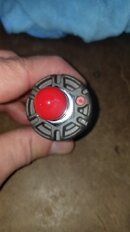Glenn Williams
Contributor
Call them what you will. Suunto calls them restrictors. What they do is eliminate the initial high pressure from entering the pod and damaging the internals, so back to my original question to all of you is would these be beneficial in the shearwater pods to keep the over pressure valve from blowing out?
Or am I barking up a wrong tree? I would imagine there are a ton of shearwater pods in use with no restrictors and they work just fine. Suunto’s original design did not have these restrictors installed but after a rash of failures this was their fix.
Just wondering if these would benefit the shearwater pods or no?
Glenn
Or am I barking up a wrong tree? I would imagine there are a ton of shearwater pods in use with no restrictors and they work just fine. Suunto’s original design did not have these restrictors installed but after a rash of failures this was their fix.
Just wondering if these would benefit the shearwater pods or no?
Glenn




